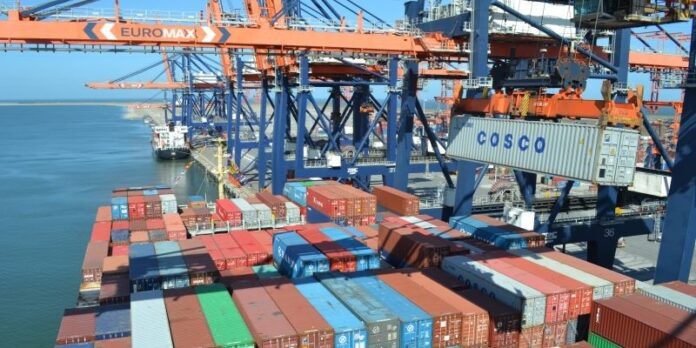The unprecedented surge of imports at retail container ports that began last summer is expected to continue at least through the end of this summer as retailers work to meet increased consumer demand, according to the monthly Global Port Tracker report released by the National Retail Federation and Hackett Associates.
“We’ve never seen imports at this high a level for such an extended period of time,” NRF Vice President for Supply Chain and Customs Policy Jonathan Gold said. “Records have been broken multiple times and near-record numbers are happening almost every month. Between federal stimulus checks and money saved by staying home for the better part of a year, consumers have money in their pockets and they’re spending it with retailers as fast as retailers can stock their shelves.”
Imports hit their lowest point in four years last March – 1.37 million Twenty-Foot Equivalent Units – as the economic effects of the coronavirus pandemic began to take hold. But cargo rebounded and hit a then-record 2.1 million TEU in August as the economy reopened, eventually peaking at 2.21 million TEU in October. Under the current forecast, volume is expected to remain at or above the 2 million TEU mark for 11 out of 13 months by this August. Before 2020, monthly imports had reached 2 million TEU only once, in October 2018.
The surge resulted in months of backups at ports, which have faced labor shortages because of COVID-19 infections and equipment shortages because of the volume. The global supply chain continues to be strained by multiple disruptions, including the recent blockage of the Suez Canal. But Hackett Associates Founder Ben Hackett said ports are beginning to catch up.
U.S. ports covered by Global Port Tracker handled 1.87 million TEU in February, the latest month for which final numbers are available. That was down 9.1 percent from January but up 23.7 percent year-over-year and the busiest February since NRF began tracking imports in 2002. A TEU is one 20-foot container or its equivalent.
March was projected at 2.07 million TEU, up 50.7 percent year-over-year, but that could be caused by last year’s swings caused by the pandemic. During March 2020, many Asian factories that should have reopened after February’s Lunar New Year holiday were still closed, and U.S. businesses were starting to close to avoid spreading the virus.
April is forecast at 1.99 million TEU, up 23.4 percent year-over-year; May at 2 million TEU, up 30.6 percent; June at 2.01 million TEU, up 24.9 percent; July at 2.04 million TEU, up 6.5 percent, and August at 2.08 million TEU, down 1.2 percent. The August number would be the first year-over-year decline since last July.








